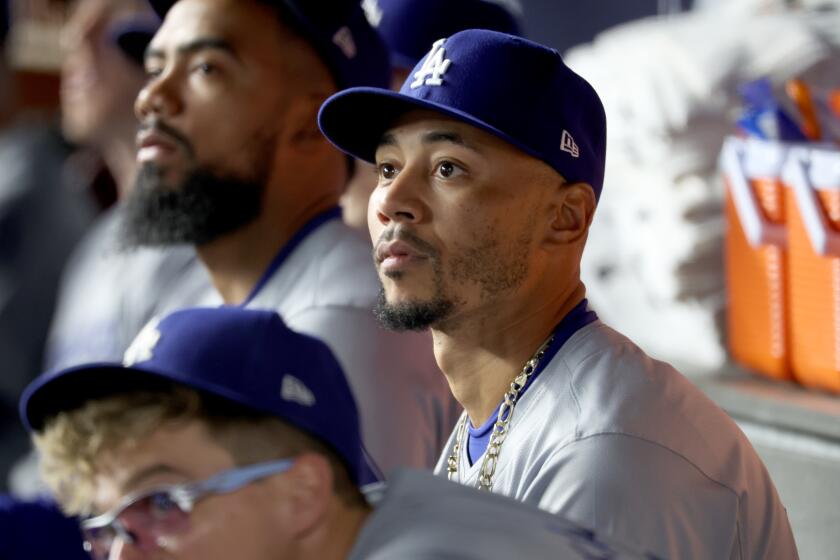Could Dodgers’ depth strategy turn off the veterans it needs to succeed?

Reporting from Washington — In the two years that Andrew Friedman has been the Dodgers’ president of baseball operations, the team has won the National League West both times, with Friedman building championship teams upon a foundation of depth.
That could prove more difficult for Friedman as the years go on, according to Washington Nationals outfielder Chris Heisey.
The strategy depends in part on veterans’ willingness to sign with the Dodgers and shuttle between the major leagues and minor leagues all season.
Heisey did that for the Dodgers last year. He did not enjoy it and said veterans might think long and hard before signing a minor league contract with the Dodgers.
“I would say it has to play into your decision a little bit, especially if you’re a guy like me that’s going to play once a week,” he said. “I think, yeah, you’ve got to take a look at that before you sign there. They didn’t do that here” in Washington.
Heisey signed a minor league contract with the Nationals last winter, made the team in spring training and remained in the majors all season. In 2015, the Dodgers optioned Heisey to triple-A Oklahoma City five times, called him up five times, released him once and re-signed him once.
On one occasion, the Dodgers called him up to add a right-handed bat against San Francisco Giants left-hander Madison Bumgarner, then returned him to Oklahoma City the next day.
That kind of roster manipulation — to get the team even the slightest edge for even one game — goes a long way in explaining why the Dodgers recorded 206 transactions this season and the Nationals 81, according to each team’s media notes.
Heisey batted a career-low .182 last season. He said the frequent shuttle between Los Angeles and Oklahoma City “absolutely” affected his performance.
“It messes with your head a little when you’re up and down like that,” said Heisey, who hit .216 this season. “I understood. They explained to me early on it was probably going to be like that, the way their roster shaped up. There just wasn’t a spot for me.
“I think this year has been a lot better in that regard — being comfortable, being with the same guys all year, competing at the highest level and not having to go back and forth and say goodbye to my family so many different times. That was one of the harder parts. Where are they going to be? Are they going to go home? Are they going to stay in Oklahoma City while I go to Los Angeles? That added stress.
“They’re doing it within the rules,” he added. “It just so happens that players have to deal with it. They’re just manipulating the roster like they’re allowed to.
“On the personal side, they may not realize the toll it may take on a player’s confidence when he’s going up and down, taken off the roster, put back on the roster, in my case released and signed back. It was a crazy year. I made some good friends there, so it wasn’t all bad. But it was tough.”
Twitter: @BillShaikin
More to Read
Are you a true-blue fan?
Get our Dodgers Dugout newsletter for insights, news and much more.
You may occasionally receive promotional content from the Los Angeles Times.








